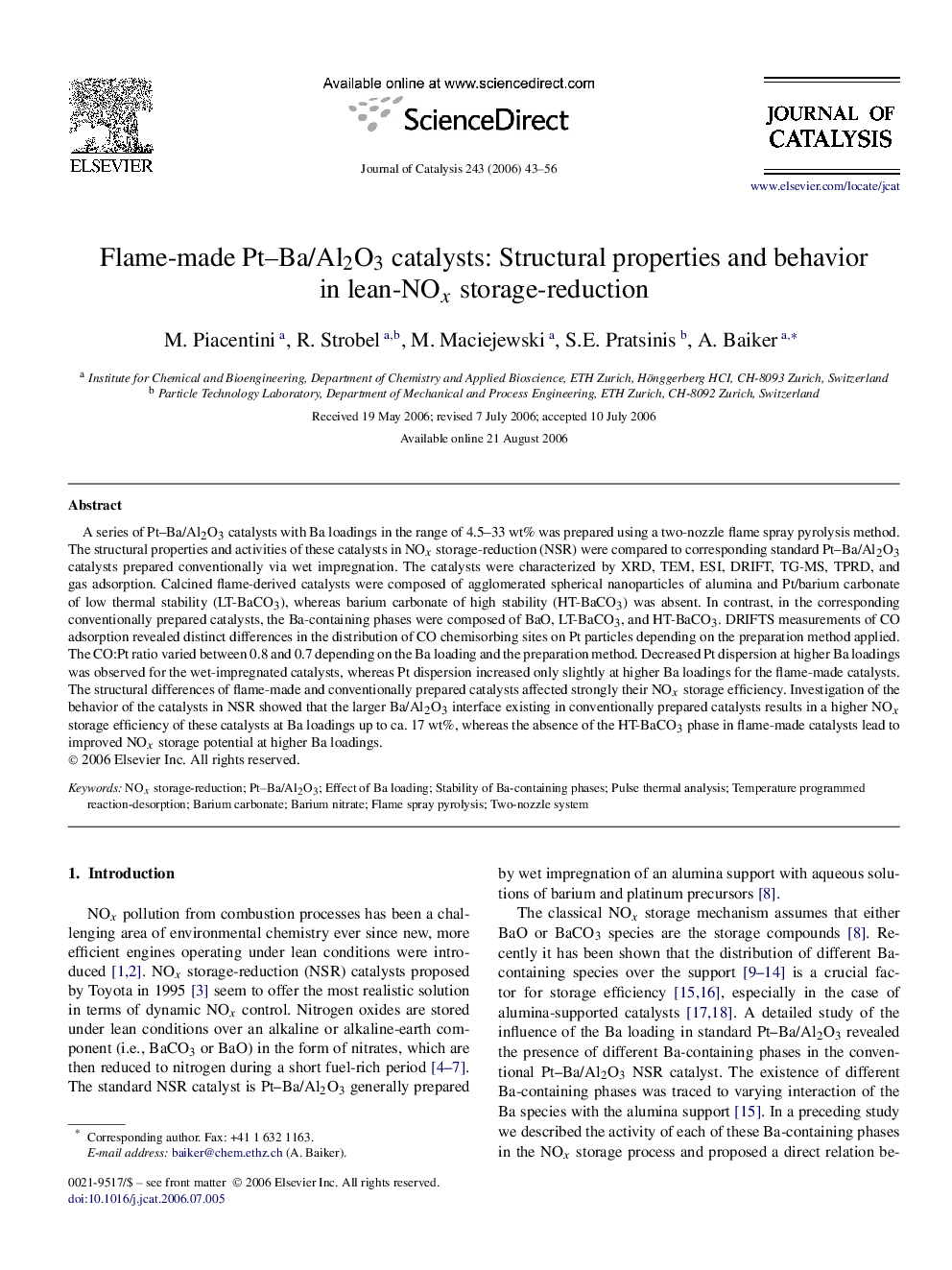| Article ID | Journal | Published Year | Pages | File Type |
|---|---|---|---|---|
| 63437 | Journal of Catalysis | 2006 | 14 Pages |
A series of Pt–Ba/Al2O3 catalysts with Ba loadings in the range of 4.5–33 wt% was prepared using a two-nozzle flame spray pyrolysis method. The structural properties and activities of these catalysts in NOx storage-reduction (NSR) were compared to corresponding standard Pt–Ba/Al2O3 catalysts prepared conventionally via wet impregnation. The catalysts were characterized by XRD, TEM, ESI, DRIFT, TG-MS, TPRD, and gas adsorption. Calcined flame-derived catalysts were composed of agglomerated spherical nanoparticles of alumina and Pt/barium carbonate of low thermal stability (LT-BaCO3), whereas barium carbonate of high stability (HT-BaCO3) was absent. In contrast, in the corresponding conventionally prepared catalysts, the Ba-containing phases were composed of BaO, LT-BaCO3, and HT-BaCO3. DRIFTS measurements of CO adsorption revealed distinct differences in the distribution of CO chemisorbing sites on Pt particles depending on the preparation method applied. The CO:Pt ratio varied between 0.8 and 0.7 depending on the Ba loading and the preparation method. Decreased Pt dispersion at higher Ba loadings was observed for the wet-impregnated catalysts, whereas Pt dispersion increased only slightly at higher Ba loadings for the flame-made catalysts. The structural differences of flame-made and conventionally prepared catalysts affected strongly their NOx storage efficiency. Investigation of the behavior of the catalysts in NSR showed that the larger Ba/Al2O3 interface existing in conventionally prepared catalysts results in a higher NOx storage efficiency of these catalysts at Ba loadings up to ca. 17 wt%, whereas the absence of the HT-BaCO3 phase in flame-made catalysts lead to improved NOx storage potential at higher Ba loadings.
